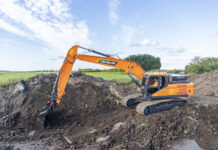
MORE than 10,000 hectares of damaged peatland has been restored in Scotland over the last year, the Scottish Government has announced.
Peatlands cover nearly two million hectares – with nearly three-quarters being degraded – of Scotland and account for two-thirds of the UK’s peatland.
More than 100 peatland restoration projects took place across Scotland over the last year, with the 10,000+ hectares restored representing the largest amount restored by the country in a year.
The work comes following the Scottish Government pledging £250 million to restore damaged peatlands, which release harmful greenhouse gases into the atmosphere – accounting for around 15% of Scotland’s emissions.
Agriculture minister Jim Fairlie said, “Restoring degraded peatland is one of the most cost-effective ways we can reduce carbon emissions and fight climate change. There are many benefits, such as reducing flooding risks, improving water quality and improving local biodiversity.
“Increasing private investment in peatland restoration and maximising the community benefits from these projects is crucial. By increasing the pace and scale of peatland restoration we can restore our natural environment and tackle climate change more effectively and I am very pleased to mark this achievement ahead of World Peatlands Day.
“I want to thank everyone across the Peatland ACTION partnership for all their hard work and commitment this year on achieving this significant milestone.”
NatureScot chair, professor Colin Galbraith, added, “As key partners in the Scottish Government’s Peatland ACTION partnership, NatureScot is accelerating the vital work needed to reach the ambitious target of 250,000 hectares of peatland being restored by 2030.
“Putting Scotland’s degraded peatlands on the road to recovery makes a vitally important contribution to reducing greenhouse gas as well as providing broader benefits for biodiversity and water management.
“Collectively, these reduce flood and fire risk and increase community resilience to the climate emergency.”










